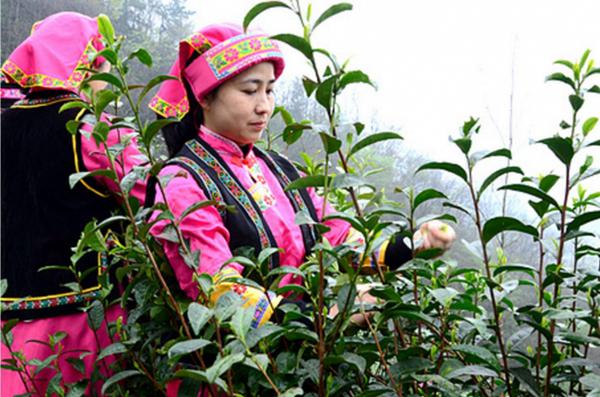24-year old British missionary Thomas Torrance(1871-1959) came to Chengdu city of Sichuan Province in China in 1896 and made unbreakable ties with the Qiang people, an ethnic group in China. While doing his missions with the Qiang people, he started a research on their history and concluded that ancestors of the Qiang people were Jews.
During his stay in China, Torrance took part in the Western China Frontier Research Association's on-site surveys and researches and published several academic essays on the study of the Qiang group and Sichuan's archeology. Before his return to England in 1937, he had lived in China for four decades.
Every July and August, Torrance would embark on his missionary journey among the Qiang group, which helped him understand the group deeply. According to Weichuan's chronicles, "In the 9th year of the Republic period of China (1920), the University of Edinburgh's Professor Torrance, known as Pastor Tao, was building a church in the county of Miansi, spreading the gospel of Jesus."
In 1918, Torrance entered into the area of the Qiang group located in the upper part of Mingjiang River to do his mission and conduct on-site researches. Based on his research and with references to relevant articles and researches, Torrance made the claim that the Qiang group's community looked like the Middle East or Pakistan because their building styles were similar.
Interested in the minor groups' cultures in Sichuan and with a good knowledge of local historical documents, in 1920, Torrance published the book "The History, Customs and Religions of the Qiang People." In the book, he expressed his point of view that the earliest settlers in Sichuan were not the Han Group. He wrote, "It was in a later period when the Han Group started to gradually occupy most of Sichuan, and now, there are still a large number of people from minor groups living there and the Qiang Group is one of them."
After studying the ethnic origin of the Qiang people, he concluded that they came from the Hanrong Group in Chinese Han Dynasty's literature. In the book "The History, Customs and Religions of the Qiang People," he pointed out that the Qiang people were indigenous and by analyzing their characters, he claimed that the "Qiang" people were originally shepherds or farmers who occupied the territory westward up to Minshan and as far as Cocoa.
In 1930, in his book "Working in the Qiang Tribe", he again mentioned about the relationship between the Qiang Group and the Jews. He wrote, "they may be from the lost ten tribes" They are Jewish in all aspects of religion except for their names. Moreover, he deduced that" the Qiang people were not Mongolian in origin ... they were early immigrants from Asia Minor. "
In 1934, Torrance further confirmed his viewpoint in the book "Primitive Spiritual Concept of Qiang People's Religion" that the Qiang people were from the Jews. He said, "In my investigation of the Qiang tribe in northwest Sichuan, I have come to two conclusions. First, the original Qiang people were from somewhere in Asia Minor. Second, their 'Old Testament' forms of religion indicate they inhabited it since the time of the early patriarchs."
In 1939, he further explained his previous view on the Qiang Group being Jewish in origin in the book "Jewish immigrants: the Israelis in China".
He proved his point of view from the perspective of religious cultures. He argued that the Qiang people's religious practices were almost always related to the Old Testament records or certain religious practices in West Asia. He also believed that the Qiang people are monotheists, not worshiping any idols like the Jews keeping the Ten Commandments. They only represented God with white paper and stone. He said: "God is holy, and the white stone god is the source of human salvation and blessing, which are the basic truths of the Qiang people's faith." Indeed, the Qiang people made sacrifices on the mountains where there are altars made of stone, which he regarded as related to the religious traditions of the ancient Jews or to the customs of the Bible.
Torrance's conclusion was rebutted by his American missionary friend and scholar, David Crockett Graham. Graham rebutted his viewpoint in the article "Qiang people's customs and religion," after he had investigated the Qiang area in the upper part of the Minjiang River and referred to local historical records. He wrote, "Qiang's physical characteristics fail to prove that they were Jewish in origin from the perspective of physical anthropology. ... Their history, language, customs and physical characteristics imply that the Qiang Group belonged to the Tibetan-Burmese branch in China. " Since the Han Group pays great attention to history, having written many historical records and local chronicles, it was impossible for them not to record the event of such a large group's migration into China in their history. Many factors indicated that the Qiang Group were moving to the West from the Northeast of China in the earliest time."
Torrance's opinion that the Qiang Group are monotheists was also refuted by his friend David Crockett Graham, who supported his argument by listing Qiang group's 12 big gods and 12 small gods, as well as other local gods.












